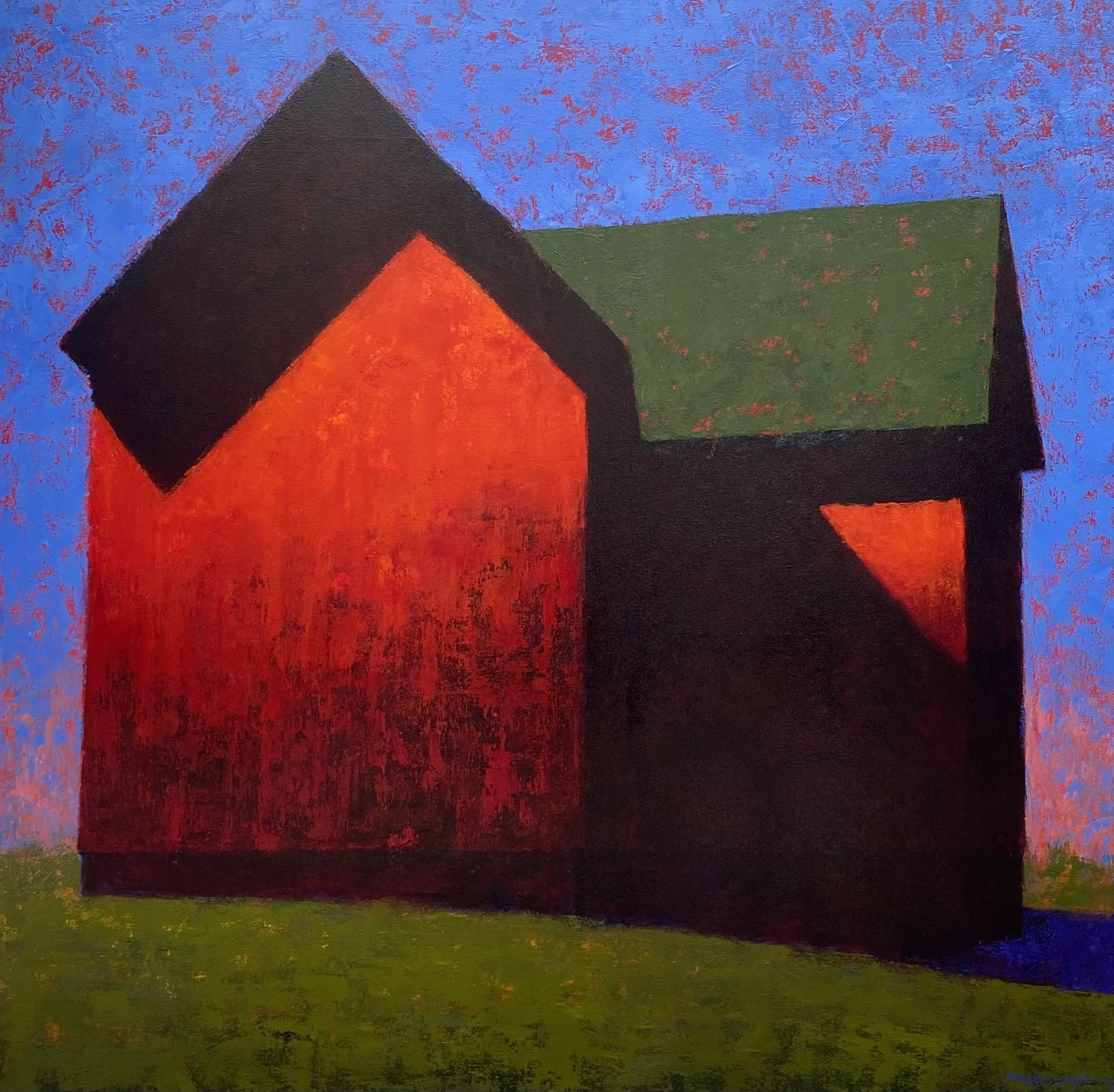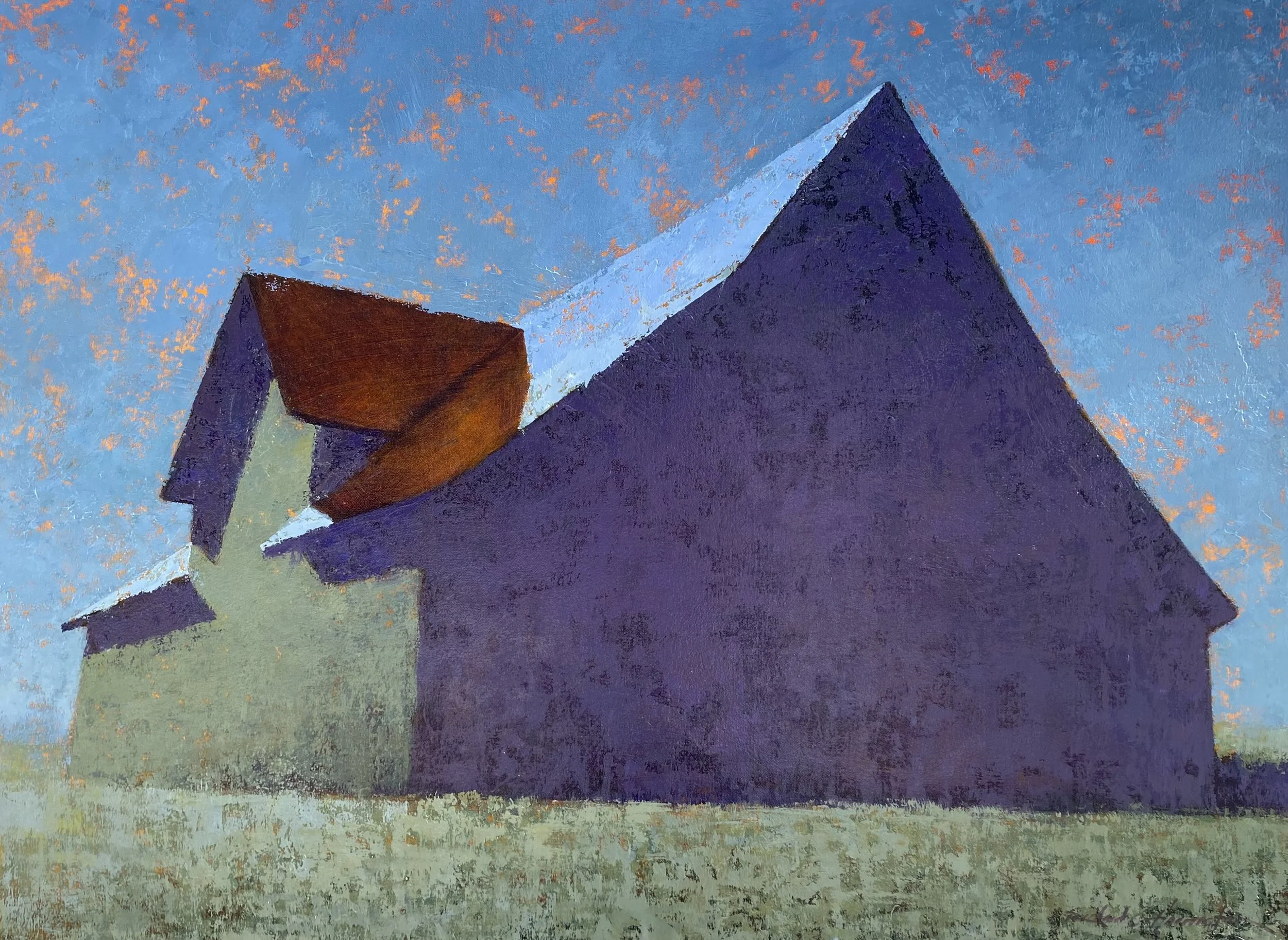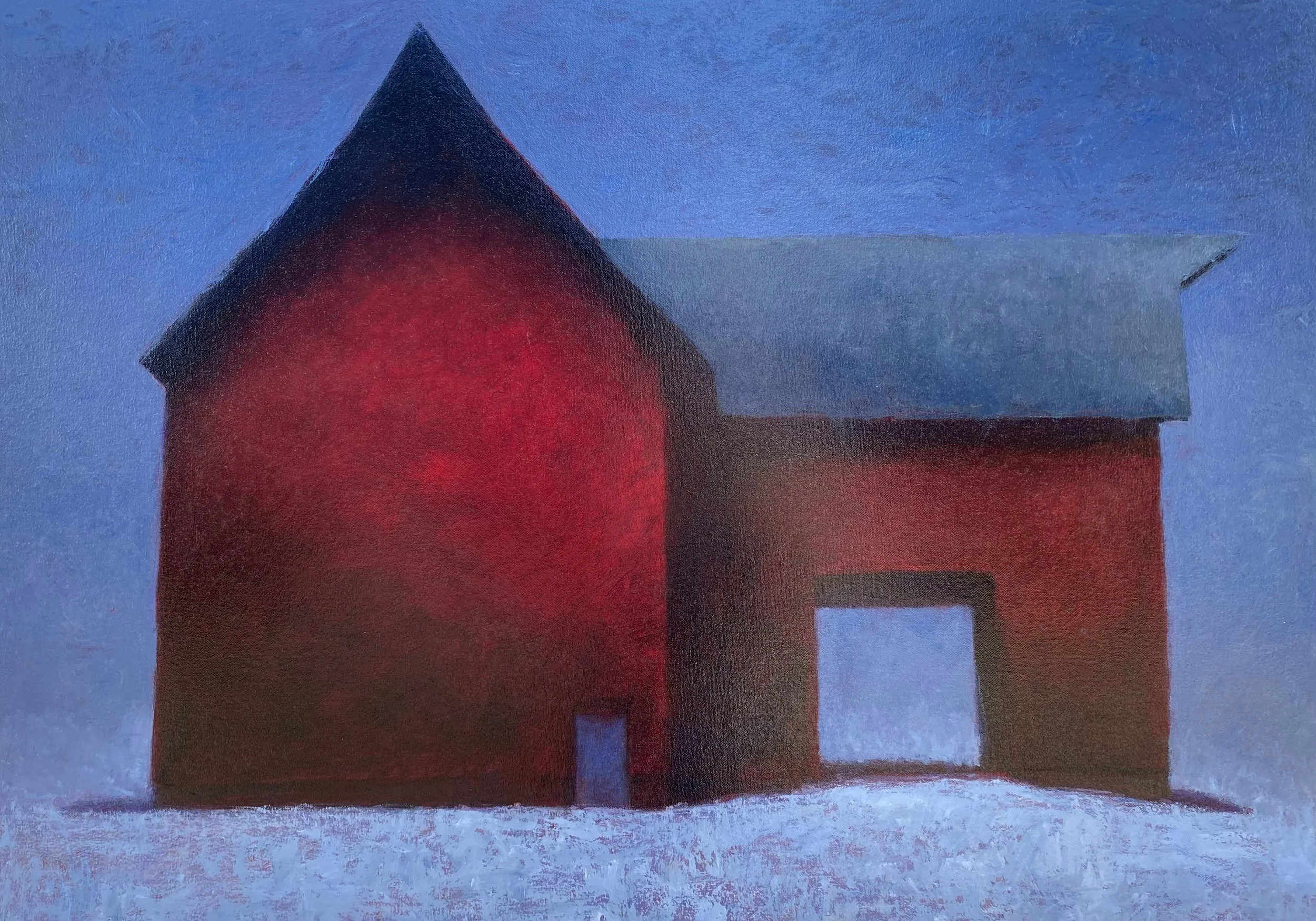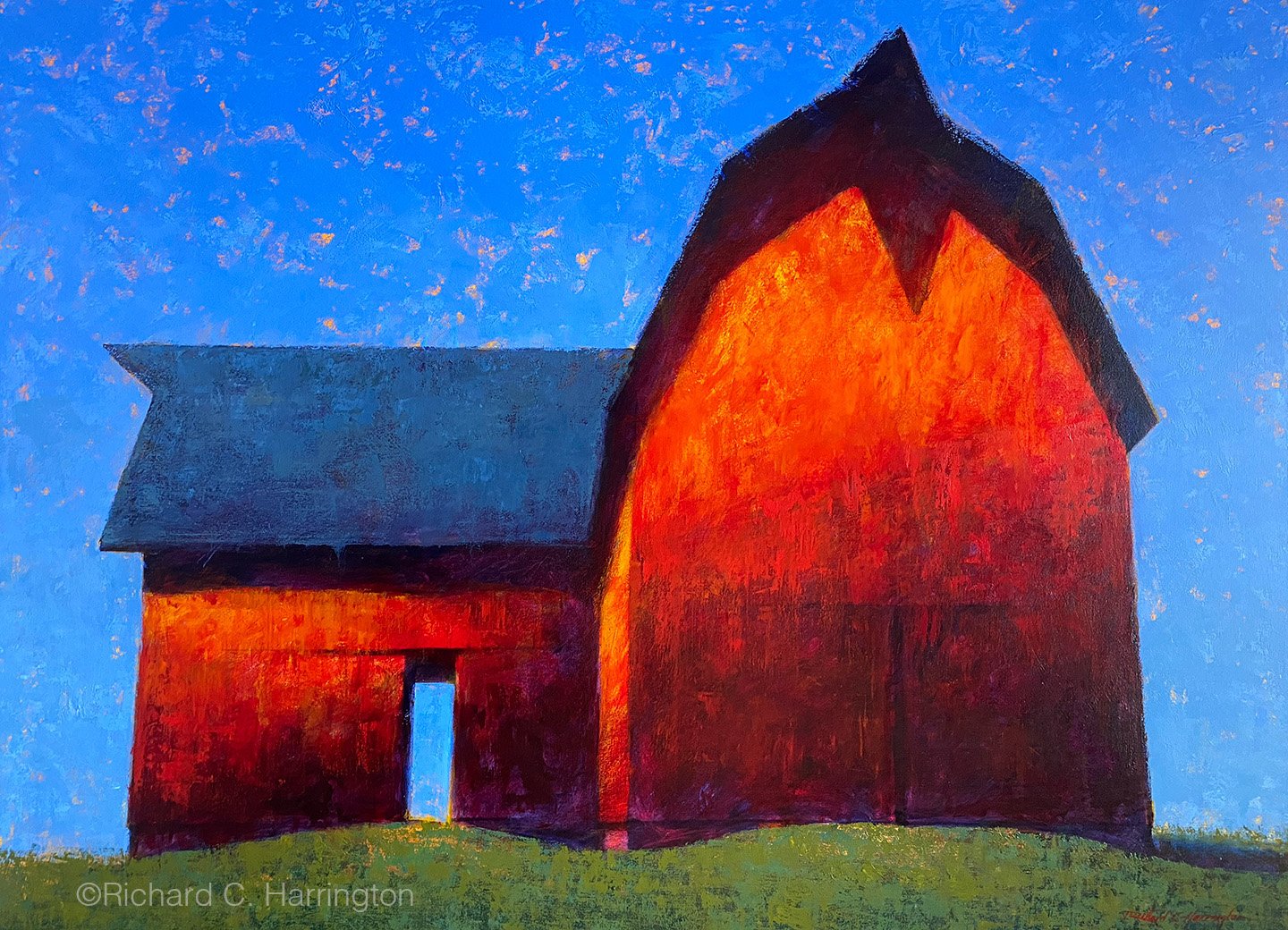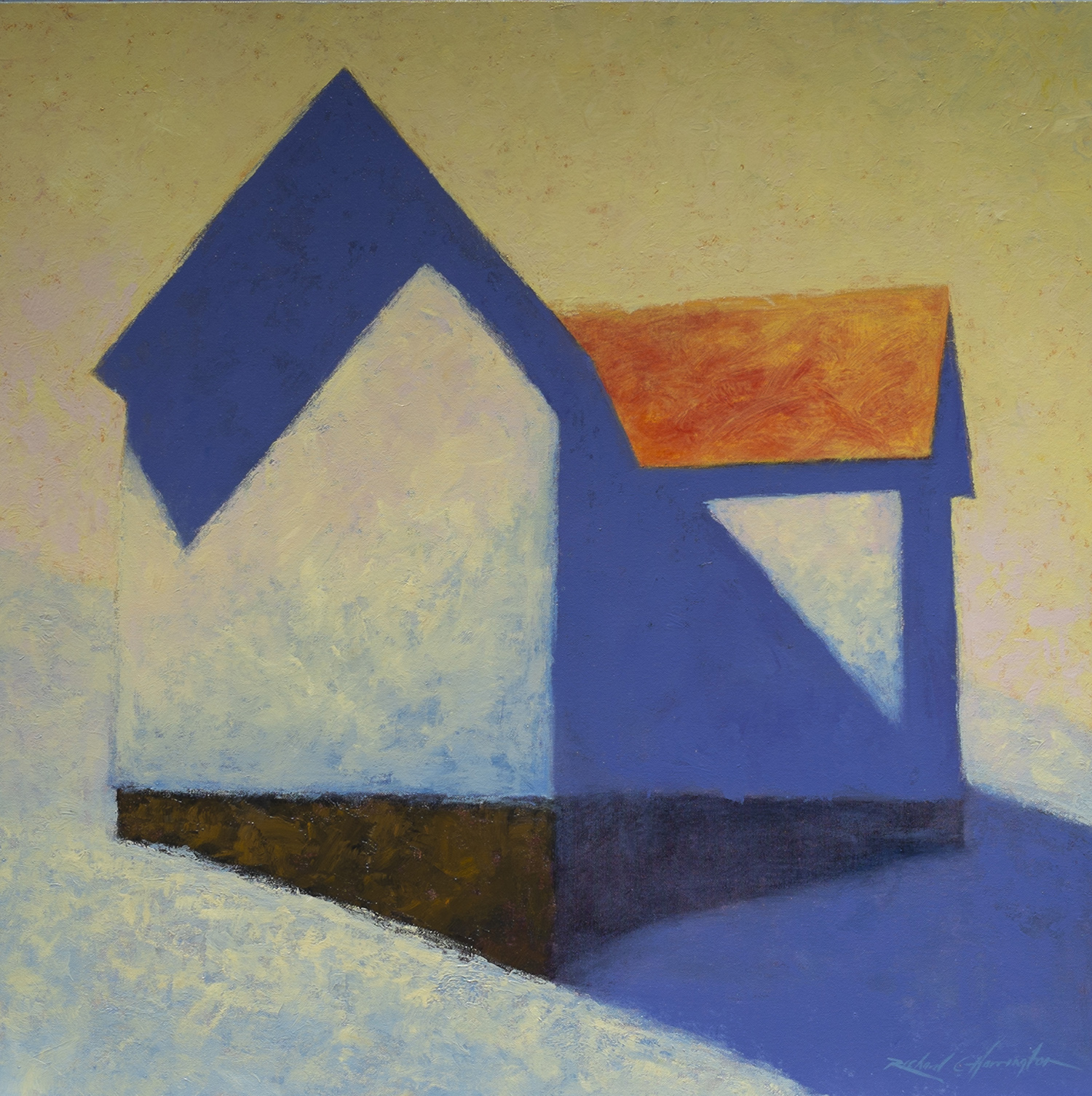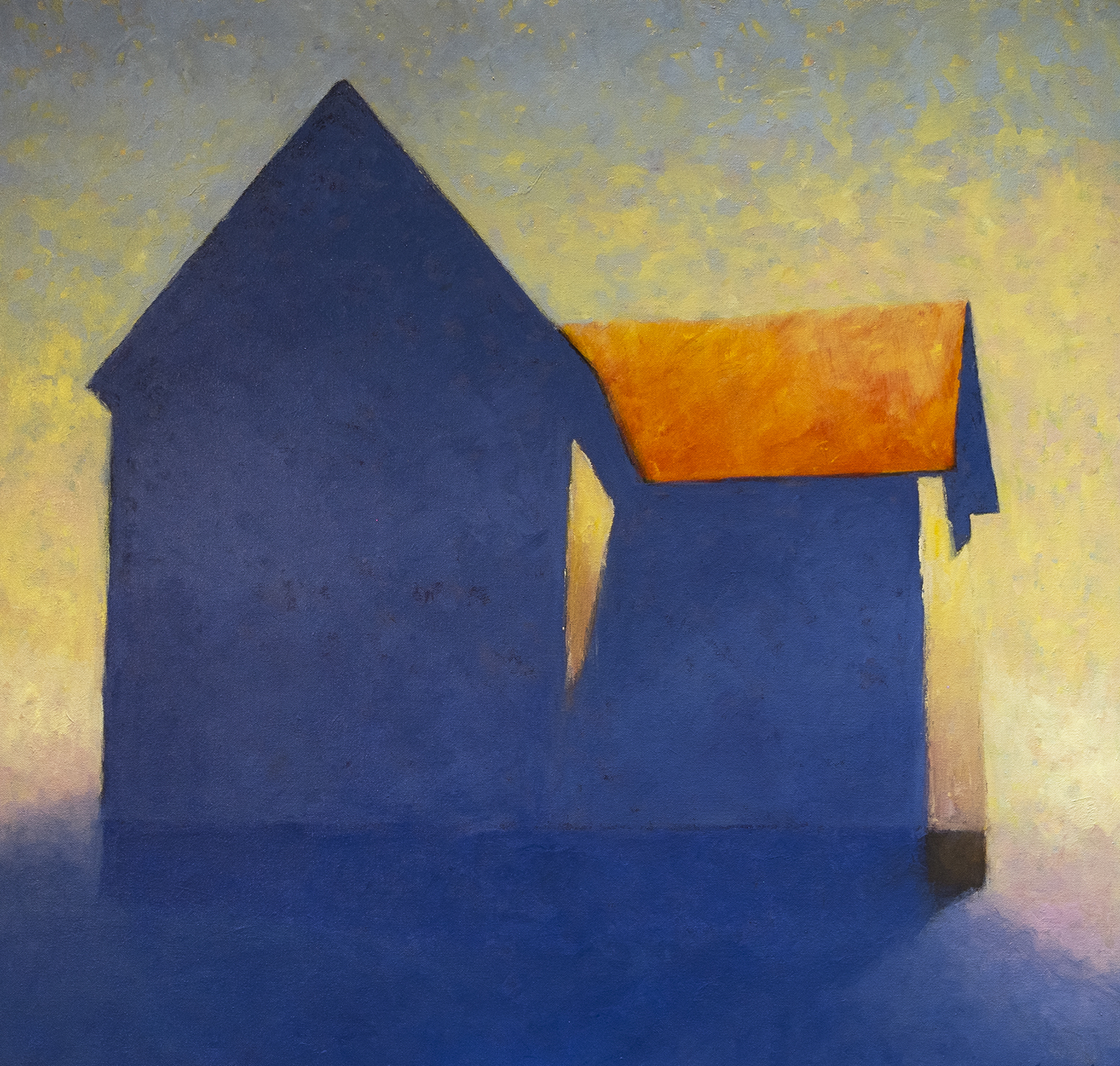Jack’s Place, Early Afternoon, 48 x 66 inches, oil on canvas, In Private Collection
At family picnics, they’d stand together in a quiet group, their slow-talking stories bringing chuckles and snorts amongst themselves. To my young eyes, they always seemed like stern, but friendly giants, fingers like sausages, leather-hard hands and corded arms. I was surprised once I reached adulthood to find they didn’t tower over me, though they’d still make me wince at a handshake, their eyes sparkling. My grandma’s little brothers, they were ranchers and lumbermen, and a carpenter in-law, in eastern Oregon.
My aunts' smothering hugs made the uncles’ handshakes seem gentle. Eyes twinkling, they were always moving, putting together meals, or some other chore, while catching up with family, doing anything that needed done. My Aunt Marilyn, gone just la few years, was on horseback every chance she got well into her 90’s.
They are what the barns are about.
I swore I’d never paint a barn, but after repeated visits to the ranches as an adult, standing in a massive hay barn I’d played in as a child, I stood there, wondering how my life had gone so wrong I wasn’t a cowboy. I’d always found barns kitschy as a subject, but a new idea began to form, a new body of work, trying to take a common subject and make it something new. To turn a subject of sweet nostalgia and American pie into something contemporary and iconic, representational to an extent, but imbued with the energy and surface of expressionism. They are a marker of my own evolution, from the strict representational work that fascinated me in my youth, to the more contemporary influences of abstract expressionism and color field painting. For me they are monuments to people like my aunts and uncles, people who’s lives and labors were forever tied to a place, men and women who greeted the day the same way they did their nephew, with smothering hugs, bone crushing handshakes, and enthusiasm for the life at hand.
Last Light, 66 x 48 inches, oil on canvas. Available through the artist
Under an Orange Sky, 40 x 30, oil on canvas. Available through the artist.
Green Roof, 60 x 60, oil on canvas. Available through the artist.
Barn in the Sage, 30 x 40 inches, oil on canvas. Available through the artist.
Shelter, 30 x 40 inches, oil on canvas. Available through the artist.
Jack’s Place, Late Morning, 48 x 66 inches, oil on canvas
Near the Pond, 30 x 40 inches, oil on canvas
Last Light, 42 x 56 inches, oil on canvas
Morning at the Dairy Barn, 66 x 48 inches, oil on canvas
Green Sky, 68 x 50 inches, oil on canvas
Bright Morning Light, 56 x 42 inches, oil on canvas
Hillside Barn, 66 x 48 inches, oil on canvas
Cathedral, 60 x 60 inches, oil on canvas. Available through Summit Gallery, Park City.
Crumbling at Dusk, 40 x 30 inches, oil on canvas. Available through Xanadu Gallery.
Shadows at Dusk, 56 x 42 inches, oil on canvas. Available through Xanadu Gallery.
Sway-Backed Under a Summer Sky, 34 x 56 inches, oil on canvas Available through Summit Gallery, Park City
Winter Shadow II, 30 x 40 inches, oil on canvas. Available through Xanadu Gallery.
Summer Afternoon, 42 x 56 inches, oil on canvas, Available through Summit Gallery, Park City.
Noon, 30 x 40 inches, oil on canvas. Available through Summit Gallery
Summer Heat, 48 x 66 inches, oil on canvas. Available through Xanadu Gallery.
Winter Shadow, 36 x 36 inches, oil on canvas. Available through Xanadu Gallery.
